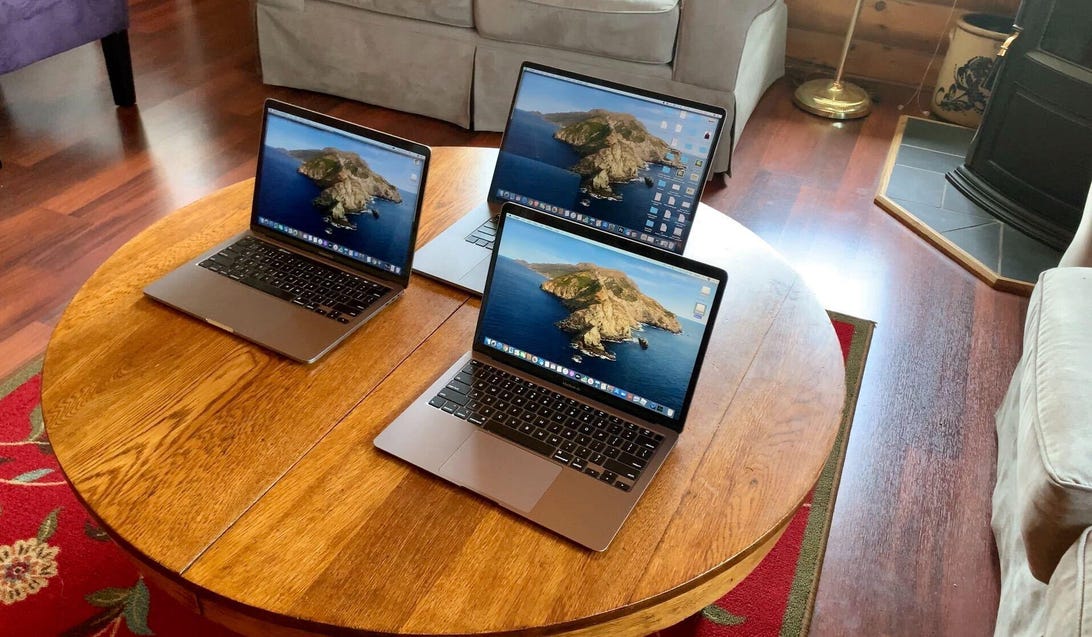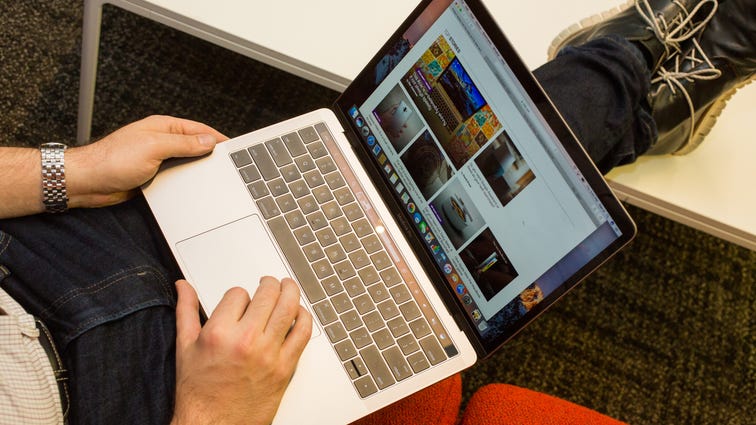Best MacBook for 2022 – CNET
MacBooks are some of the most popular and universally useful laptops on the market right now. And for good reason, thanks to Apple’s intuitive MacOS and the powerful line of new M1, M1 Pro and M1 Max processors. But you don’t necessarily need to spend thousands on a cutting-edge MacBook. There are models out there for every budget, ranging from $999 to a whopping $6,000 or more, even if they do share many of the same design and feature DNA. With so many different options out there, deciding which MacBook is best for your needs can be a little overwhelming. Below you’ll find answers to some of those frequently asked questions, as well as our picks for the best MacBook for your laptop needs.
Apple is still offering education deals on MacBooks: Normally, the Apple Store is (ironically) not the best place to buy an Apple laptop (really, almost any Apple product) because sales are all but nonexistent. The big exception to the rule is Apple’s education sales, which usually include MacBook deals. If you’re a student or teacher, that can mean $100 off a MacBook Air and a free pair of AirPods, plus a 20% discount on the AppleCare Plus extended warranty (which I have mixed feelings about). On the other hand, we’ve also found Apple laptop deals through Best Buy’s Student Deals page.
All current MacBooks have the improved Magic Keyboard: It started in 2019, but Apple has since added the Magic Keyboard to all of its current MacBook Pro models. The result is a far more comfortable and reliable keyboard than the “butterfly” design that many MacBooks had been burdened with since 2015. Yes, it took Apple half a decade to backtrack, but the good news is that Mac laptop keyboards are finally good again.
14-inch and 16-inch MacBook Pro, great webcam; 13-inch MacBook Pro and MacBook Air, meh webcam: The jump to a 1080-resolution camera in the newest MacBooks, and similar to the one found in the 24-inch iMac, is a game-changer for those of us sitting in video meetings all day. Here are some tips on making the 720-resolution cameras in those other Macs look better.
If you need something bigger and don’t mind it being less than portable: Apple just updated its smaller iMac (formerly 21.5 inches, now 24 inches) that comes in seven color options and runs on the company’s M1 processor. If you need a bigger display and high-end components, the 2020 27-inch iMac is also available, making it one of the last Intel-powered Macs available.
Almost all Macs have transitioned to Apple’s own M1 chips: It was the big news at Apple’s WWDC show in 2020. Since then, the MacBook Air, 13-inch MacBook Pro, Mac Mini, 24-inch iMac, 16-inch MacBook Pro and a new 14-inch MacBook Pro all run either M1, M1 Pro or M1 Max chips, which include both CPU and GPU cores. Based on our testing so far, the Apple M1 line has, across the board, delivered on Apple’s promises of better battery life and faster performance.

Dan Ackerman/CNET
The key question is how to make sure you’re not buying too little MacBook — or too much. What is the best MacBook for your needs? For most people, the 13-inch Air remains the default choice and rightly so. The new 14-inch and 16-inch Pro models are more powerful, but in a way that only people who need heavy GPU support will need. Yes, you get a better display, new camera and more ports with those, but if you’re buying a new Pro just for that, be aware that you’re making what is essentially a vanity purchase.
Read more: Best Mac VPN for 2022
MacBook starting configurations
| 14-inch MacBook Pro | 16-inch MacBook Pro | MacBook Air (13-inch, M1) | 13-inch MacBook Pro (M1) | |
|---|---|---|---|---|
| CPU | M1 Pro or M1 Max | M1 Pro or M1 Max | M1 | M1 |
| No. of GPU cores | 14-16 (M1 Pro), 24-32 (M1 Max) | 16 (M1Pro), 24-32 (M1 Max) | 7 | 8 |
| Screen size | 14.2 | 16.2-inch | 13.3-inch | 13.3-inch |
| Screen resolution | 3,024×1,964 pixels | 3,456×2,234 pixels | 2,560×1,600 pixels | 2,560×1,600 pixels |
| Starting storage | 512GB | 512GB | 256GB | 256GB |
| Starting RAM | 16GB | 16GB | 8GB | 8GB |
| Webcam | 1080p | 1080p | 720p | 720p |
| Networking | 802.11ax Wi-Fi 6, Bluetooth 5.0 | 802.11ax Wi-Fi 6, Bluetooth 5.0 | 802.11ax Wi-Fi 6, Bluetooth 5.0 | 802.11ax Wi-Fi 6, Bluetooth 5.0 |
| Connections | Thunderbolt USB-C x3, HDMI, SDXC card, MagSafe 3 | Thunderbolt USB-C x3, HDMI, SDXC card, MagSafe 3 | Thunderbolt USB-C x2 | Thunderbolt USB-C x2 |
| Weight | 3.5 lbs | 4.7 lbs | 2.8 lbs | 3.0 lbs |
| Starting price | $1,999 | $2,499 | $999 | $1,299 |

Dan Ackerman/CNET
For many years, this Apple laptop was everyone’s favorite laptop. It was reasonably priced, thin, light and built like a tank. It could last for years and take lots of falls and bumps. For any college student or coffee shop creative type, $999 would get you sorted.
Then time passed the Air by. Its low-res display and the thick bezel around the screen fell behind average Windows laptops. The components were rarely updated. Fortunately, the Air got a huge refresh and now the MacBook Air looks and feels very much like a MacBook Pro. Most importantly, Apple MacBook Air laptops are back down to that magical $999 starting price (which is currently $899 at some retailers).
The M1-powered Air doesn’t have any vents, which means there are no fans and no fan noise — perfect for classrooms and conferences. You only get two Thunderbolt 3 USB-C ports, but for most people that’s enough, as long as you can get a whatever-to-USB-C dongle.
The difference this year is that the new MacBook Pro laptops have better displays, faster processors and more ports, including HDMI and an SD card slot. But if you want those, you’re looking at double the starting price.
If you’re a college student, a would-be entrepreneur, a writer or just looking for an all-around laptop on the high end of casual, it’s tough to go wrong with the MacBook Air. It’ll rightly be Apple’s laptop default starting point for a lot of people.
Read our Apple MacBook Air M1 review.

Andy Hoyle/CNET
When Apple updated the Air with its M1 chip in late 2020, it also updated the 13-inch MacBook Pro. Unlike the Air, though, the Pro has fan vents, which help keep this M1 MacBook Pro cool when processing your raw photo edits or cranking through your video exports.
The switch to M1 means software is ideally rewritten to take advantage of the new M1 chip hardware. Fortunately, Apple’s Rosetta 2 software allows Intel-native versions of applications to run normally with the M1 chip. In our testing, the performance difference was negligible if at all.
This is now the last Pro to have the Apple Touch Bar, which isn’t as useful as Apple would have you believe but not as useless as everyone else thinks. I use it all the time for screen brightness, volume control and a few other contextual buttons, like when using the calculator app. But in the latest 14-inch and 16-inch MacBook Pros, the Touch Bar is gone, so this 13 inch MacBook Pro is the last holdout.
Since the MacBook Air and the MacBook Pro model are close in price, you might be tempted to get the less expensive Air over the Pro — after all, they look and feel similar and share a lot of the same features. And for many people, that’s the right call, or if you’re a power user, consider stepping up to the new 14-inch Pro.
Read our Apple MacBook Pro M1 hands-on.

Dan Ackerman/CNET
The new-for-2021 16-inch MacBook Pro is the biggest, most-powerful MacBook you can buy. It’s a true desktop replacement and a worthy heir to the late, great 17-inch MacBook Pro, last seen in 2012.
Both this and the new 14-inch version add the same resurrected ports, new Mini-LED display, MagSafe power connection and improved webcam. Both are available with either the M1 Pro or M1 Max chip, which are precisely what a slice of the creative pro market has been waiting for. These new chips offer up to 36 GPU cores (and up to 10 CPU cores) and replace the need for both an Intel CPU and discrete AMD graphics, a combo previously found in only a few high-end Macs. In other words, after a long wait, professional video editors and 3D modelers have a new MacBook aimed squarely at them.
The border around the display here has gotten so thin that there’s not even room for a webcam any longer. Here the camera gets slotted into an iPhone-like notch at the top of the display. Yes, just like an iPhone. And like the iPhone, it’s annoying and too obvious at first. But it’s worth the tradeoff, as the higher-res 1,080 camera will spoil you quickly if you’re used to the lower-res 720p cameras in other Macs (and most Windows laptops as well).
With a starting price of $2,450, just keep in mind that if you’re not specifically going to use these new GPU capabilities and just want the latest, coolest MacBook, this is a pretty expensive way to get an HDMI port and SD card slot.
Read our Apple MacBook Pro 16-inch review.

Dan Ackerman/CNET
From a distance, the new 14-inch MacBook Pro looks a lot like the 13-inch MacBook Air or 13-inch MacBook Pro you might already be using. Look again and the differences pop out. It has a bigger screen (obviously), slimmer bezels and a new keyboard color scheme.
Thinking of this as a successor to the 13-inch Pro, the screen size jumps from 13.3 to 14.2 inches. It’s what Apple calls a Liquid Retina XDR display, which is basically a Mini-LED screen, as in the 12.9-inch iPad Pro.It also has the same HDMI, SD card and MagSafe ports as the 16-inch, and the same 1080 webcam.
Both the M1 Pro and M1 Max available in the 14-inch, and it can be configured with the same 64GB RAM and 8TB storage as the 16-inch Pro. But what you can get on the 14-inch are a couple of lower-end Apple M1 Pro options not available for the 16-inch, with fewer CPU and GPU cores.
If you’re a college student, coffee-shop writer or other mainstream laptop user, consider that this is a hefty premium to pay for a better screen and webcam and more ports. It might be like buying a sports car just for driving on city streets. Bring in all-day, every day web video meetings, you might be able to make a good case.
Read our Apple MacBook Pro 14-inch review.
Which MacBook should I buy?
My TL;DR advice is as follows.
- If you need a MacBook for everyday work, schoolwork, web surfing, movies and light creativity, go with the MacBook Air. For most people, this is all the MacBook they’ll need.
- The 13-inch MacBook Pro remains a tough sell. More expensive than the Air, but essentially the same Apple M1 chip. It’s also the last holdout of the Touch Bar.
- The 16-inch MacBook Pro is the one high-end creative pros have been waiting for. Every video editor and creative pro I’ve spoken to is either excited to get one or has already preordered one, usually with the highest-end M1 Max chip.
- The 14-inch MacBook Pro can do almost everything the 16-inch can, but in a smaller package. It’s either a premium mainstream laptop splurge or a work tool for creative types who need something a little more portable.


-3.png?width=698&height=393&name=blog%20image%20Salima%20(1)-3.png)